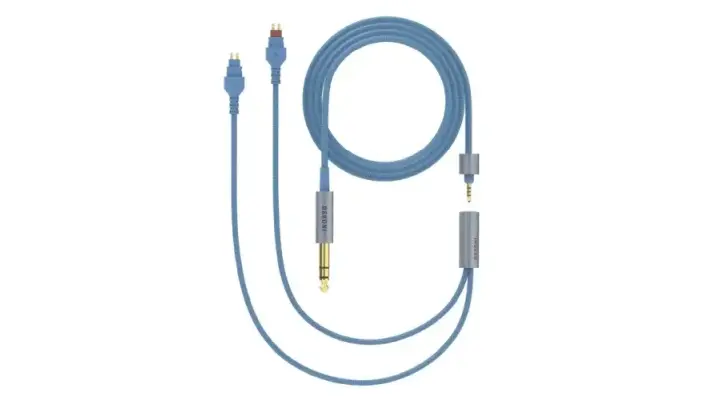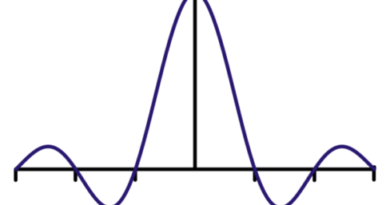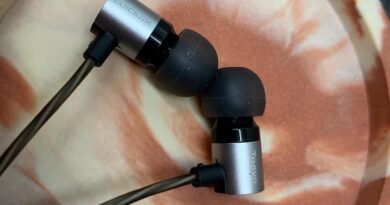Dekoni Ensemble Modular Headphone Cables REVIEW
Jackrabbit Media kindly provided the Ensemble cables for my review – and I thank them for that. You can get them here.
Dekoni Ensemble is the company’s incursion into the crowded headphone cables market. They are getting in with a modular design with some very interesting features, and a “notable” price too. I’ve been sent a couple of samples to assess with my HD600 cans, and here’s a concise report of my experience.
You can find (and buy) the Ensemble cables from the manufacturer’s own web site, here. A dual-part kit costs from $120 to $165 USD depending on the headphone models involved.
In this Article
At-a-glance Card
| PROs | CONs |
| Good idea, high practical convenience and flexibility | Headphone and Amplifier modules range still limited |
| Good implementation | High price |
I am not writing these articles to help manufacturers promote their products, even less I’m expecting or even accepting compensation when I do. I’m writing exclusively to share my fun – and sometimes my disappointment – about gear that I happen to buy, borrow or somehow receive for audition.
Another crucial fact to note is that I have very sided and circumscribed musical tastes: I almost exclusively listen to jazz, and even more particularly to the strains of post bop, modal, hard bop and avantgarde which developed from the late ’50ies to the late ’70ies. In audio-related terms this implies that I mostly listen to musical situations featuring small or even very small groups playing acoustic instruments, on not big stages.
One of the first direct consequences of the above is that you should not expect me to provide broad information about how a certain product fares with many different musical genres. Oppositely, you should always keep in mind that – different gear treating digital and analog sound in different ways – my evaluations may not, in full or in part, be applicable to your preferred musical genre.
Another consequence is that I build my digital library by painstakingly cherry-pick editions offering the least possible compression and pumped loudness, and the most extended dynamic range. This alone, by the way, makes common music streaming services pretty much useless for me, as they offer almost exclusively the polar opposite. And, again by the way, quite a few of the editions in my library are monoaural.
Additionally: my library includes a significant number of unedited, very high sample rate re-digitisations of vinyl or open-reel tape editions, either dating back to the original day or more recently reissued under specialised labels e.g. Blue Note Tone Poet, Music Matters, Esoteric Jp, Analogue Productions, Impulse! Originals, and such. Oppositely, I could ever find an extremely small number of audible (for my preferences) SACD editions.
For my direct and conclusive experience, virtually none of the above is available on the most common streaming platforms, which makes their offering of high sampling material apriori pointless for my purposes. Quite simply, then, I don’t use streaming services as I find them not up to my requested quality.
My source gear is on its turn selected to grant very extended bandwidth, high reconstruction proweness, uncolored amping. Which in particularly means that TWS and any other form of lossless-based wireless gear is apriori off my selection panel.
And finally, my preferred drivers (ear or headphones) are first and foremost supposed to feature solid note-body timbre, and an as magically centered compromise between fine detail, articulated texturing and microdynamics as their designers can possibly achieve.
In terms of presentation, for IEMs I prefer one in the shape of a DF curve, with some very moderate extra pushup in the midbass. Extra sub-bass enhancement is totally optional, and solely welcome if seriously well controlled. Last octave treble is also welcome from whomever is really able to turn that into further spatial drawing upgrade, all others please abstain.
Features and description
Externals
The crux to Dekoni Ensemble cables is no doubt the modularity part: each cable is made of two parts, or two halves if your prefer – one connecting to the drivers, and the other one connecting to the amplifier/source device – which are supposed to be snapped into one another and kept togetter thanks to a proprietary connector.
As one might expect, it is possible to order “full kits”, or separately order “driver modules” and “amplifier modules”. Each user can then build its own “cable toolbox”, precisely tailored on their own unique headphones and amps collection, with as little redundancy and as much flexibility as possible.
The “middle connector” – i.e., the male/female plug system in charge of fixing the two halves into a whole – is well conceived and well realised. It is intuitive enough, easy to operate, and its its twist-to-lock design is convincing in terms of solidity.
Last and not least the lineup includes two physical wiring options: white, braided silver-plated copper or light blue, nylon-wrapped copper.
Range breadth
The Dekoni Ensemble modules range is initially a bit limited, as it nowadays includes support for three headphone connector types only yet (3.5mmTS, mini-XLR and Sennh-650), just 2 amplifier side terminations (4.4mm TRRS balanced and 6.25 single ended), and 2 cable material options (the already mentioned braided silver-plated copper and nylon-wrapped copper).
More headphone connectors and more material options are reportedly planned for introduction in the near future, but a date seems not to be set yet.
Direct experience
I assessed ensemble kits of both available wire material options, using my HD600 as a reference driver, which is probably a good idea given its eminently neutral tuning, quite revealing of small tonality variations inducted by source or cable sonic footprints.
There is a slight but quite perceivable sonic difference between the full copper model (the one in the blue sheath) and the silver-plated one, and – on the HD600 at least – I tend to prefer the former (smoother, more effortless) to the latter (more energetic and sculpted, but also a little bit shoutier). The difference is very lighty however, I might as well consider it not significant.
Quick comparisons
Neither of two Ensemble cable types seemed to offer relevant sonic improvement over the (non-modular) other HD600 cables I have at hand : the original Sennheiser one of course, and a chifi-made Haldane Blackjelly 7N Litz silver plated OCC single crystal copper one)
More interestingly, I compared the Dekoni Ensemble samples to my current standard cables for HD600, coming from Hart Audio. The result of the comparison is quite straightforward: Hart wins.
My non-custom Hart cables offer more precisely fitting HD6 connectors (Dekoni’s are a tad “too tight” to push/pull), and an equivalently effective if not even better designed interlock mechanism. Hart also offers a huge (!) catalog of options supporting dozens of different cans, and – what probably matters most – their cables sound better and cost much less (as in: almost 50% less) than Dekonis’.
Tested on my HD600 paired with an SMSL SP400 amp, Hart cables deliver better air, and better note weight compared to Ensemble Blue, and such sonic difference is quite obvious.
Considerations & conclusions
Ensemble cables are no doubt a promising project from such an established US brand as Dekoni, and I’m sure it will develop into a market winner very soon. I am a firm supporter of modular cabling, as I think that when their build quality is adequate – as it definitely is the case with Dekoni Ensemble – the (potential) sonic downsides related to the interconnector presence are totally negligible vs their practical convenience.
While the product no doubt works, and does it well, it comes with downsides too.
Pricing is the main, quite relevant, criticism. Not in absolute terms, no: the phones’ cable market prices span from dimes to thousands for a single unit. Add that in principle it’s no doubt ok to position a product range like this higher than mainstream chifi non-modular, low quality alternatives.
The modular headphone cable market is not virgin, however, and the small-sized Hart Audio offers very high quality items, a much wider catalog of supported models and connectivity options, and more, at way more appealing prices. Food for Dekoni’s thought.
Our generic standard disclaimer.







